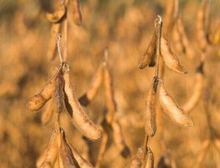 By maximising its existing crushing industry capacity – utilisation is currently below 50 percent – China could ringfence regional demand, providing a significant growth opportunity for Chinese crushing businesses. In doing so, China would fundamentally alter the battle for global soybean supply, forcing the crushing industry in the West to either find new markets or shut down.
By maximising its existing crushing industry capacity – utilisation is currently below 50 percent – China could ringfence regional demand, providing a significant growth opportunity for Chinese crushing businesses. In doing so, China would fundamentally alter the battle for global soybean supply, forcing the crushing industry in the West to either find new markets or shut down.“Demand for soymeal from the animal protein industry has increased dramatically in South East Asia in recent years, and the region has emerged as an important export destination, accounting for 20 percent of the world’s soymeal trade in 2011/12” said Rabobank analyst Pawan Kumar. “Up to now, South East Asia has had few choices of its own when it comes to sourcing soymeal to meet this growing demand and has relied on imports from South America. However, soymeal exports out of China could offer an alternative – one that could provide a saving of up to 20 percent in freight costs”.
At price levels averaged over the last two years, soymeal from China is uncompetitive by about USD 57 per tonne compared to the Americas. However, Rabobank believes that there are three scenarios that could change the ‘status quo’ and lead to a geographical dislocation in the soymeal market.
First, Chinese processors could begin to sell soymeal at a discount or breakeven prices in order to capture the South East Asia market, a strategy followed to capture Chinese market share and one which kept the crushing industry going during unprofitable periods. This would also increase the utilisation rate for Chinese crushers, which might contribute positively to earnings. Under such a scenario, exports would also potentially become competitive with respect to direct shipments of US soymeal to South East Asia.
Second, the case for China would become even stronger if the Chinese government formally allowed fiscal treatment of soymeal exports as a re-export and for VAT to be reimbursed as it is by other governments in Asia. A rough estimate suggests that this could amount to more than USD 50/tonne and provides a positive basis for Chinese exports to cater to South East soymeal demand.
Finally, Rabobank suggests that India – which supplied 1.7 million tonnes of soymeal to South East Asia in 2011 – may reach a situation where, it reduces the availability of soymeal for exports to South East Asia. This would be as a result of their growing animal protein industry and challenges in oilseed production growth.





